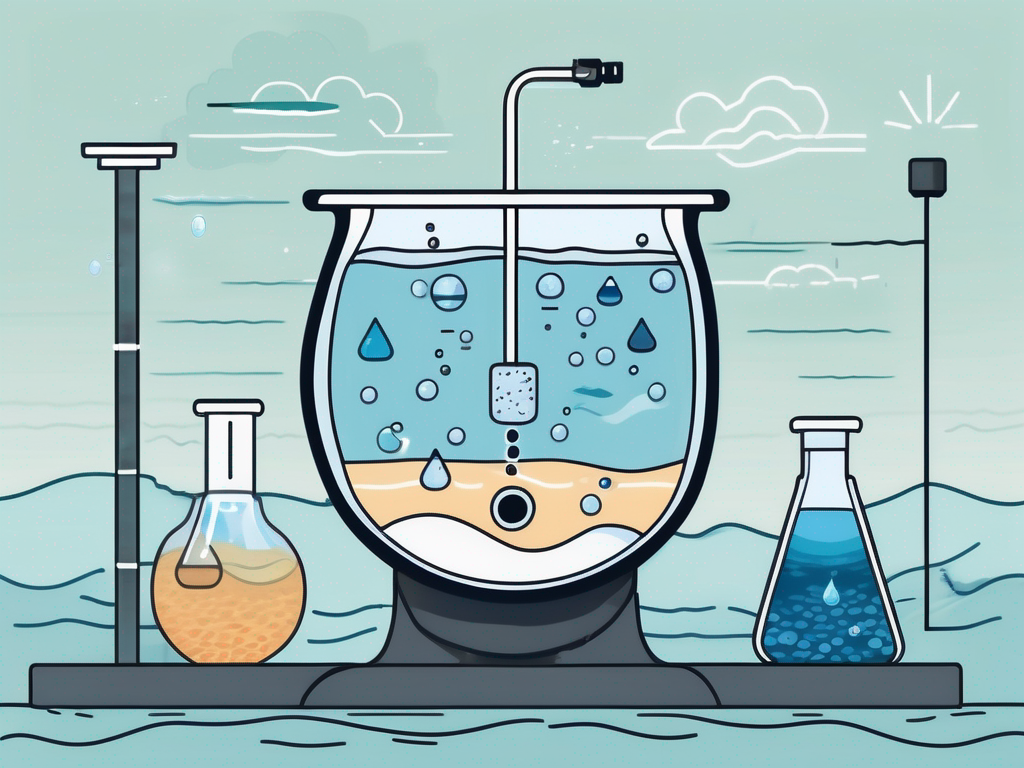
Understanding and Testing Drinking Water for TDS (Total Dissolved Solids)
Understanding and Testing Drinking Water for TDS (Total Dissolved Solids)
Ensuring the quality of drinking water is crucial for maintaining good health. One of the key parameters in assessing water quality is the measurement of Total Dissolved Solids (TDS). TDS refers to the combined content of all inorganic and organic substances contained in a liquid, which can affect the taste, health, and safety of the water. This guide delves into the importance of testing drinking water for TDS, how to conduct these tests, and what the results mean for your water quality.
What Are Total Dissolved Solids (TDS)?
Total Dissolved Solids (TDS) are the total concentration of dissolved substances in water. These substances can include minerals, salts, metals, cations, or anions dissolved in water. TDS is often used as an indicator of water quality, as high levels of TDS can affect the taste and healthiness of the water. Common sources of TDS in water include agricultural runoff, urban runoff, industrial wastewater, and natural sources such as mineral springs.
While TDS itself is not considered a primary pollutant, it is used as an indicator of the presence of a broad array of chemical contaminants. High levels of TDS can lead to water hardness, scale formation, and can affect the palatability of water. Understanding the TDS level in your drinking water can help you make informed decisions about water filtration and treatment options.
Measuring TDS is important for both residential and industrial water users. For households, it ensures the safety and quality of drinking water, while for industries, it helps in maintaining the efficiency and longevity of equipment and processes that use water.
Why Test Drinking Water for TDS?
Health Implications
Testing drinking water for TDS is essential because high levels of dissolved solids can have health implications. While the human body requires certain minerals found in water, excessive levels can lead to health issues. For instance, high sodium levels can be problematic for individuals with hypertension, while excessive calcium and magnesium can contribute to kidney stones.
Water Taste and Aesthetics
The taste and appearance of water can be significantly affected by its TDS levels. Water with high TDS often has a bitter, salty, or metallic taste, which can be unpleasant for consumption. Additionally, high TDS can cause water to appear cloudy or leave residue on dishes and fixtures, impacting the overall aesthetic quality of the water.
Equipment and Plumbing Concerns
High TDS levels can also affect household appliances and plumbing systems. The dissolved solids can lead to scale buildup in pipes, water heaters, and other appliances, reducing their efficiency and lifespan. Regular testing and management of TDS can help prevent these issues, saving money on repairs and replacements.
How to Test Drinking Water for TDS
Using a TDS Meter
A TDS meter is a simple and effective tool for measuring the total dissolved solids in your water. These handheld devices are easy to use and provide instant results. To use a TDS meter, simply collect a sample of water in a clean container, insert the meter's probe into the water, and read the displayed TDS level. Most TDS meters measure in parts per million (ppm), and the ideal TDS level for drinking water is generally considered to be below 300 ppm.
Laboratory Testing
For a more comprehensive analysis, you can send a water sample to a certified laboratory. Laboratory testing can provide detailed information about the specific types of dissolved solids present in your water, which can be useful for identifying potential contaminants. This method is more accurate than using a TDS meter but can be more costly and time-consuming.
Test Strips
Another option for testing TDS is using test strips. These strips change color based on the concentration of dissolved solids in the water. While not as precise as a TDS meter or laboratory testing, test strips can provide a quick and easy way to get a general idea of your water's TDS level. Simply dip the strip into a water sample and compare the resulting color to a chart provided with the strips.
Interpreting TDS Test Results
Understanding TDS Levels
Interpreting TDS test results involves understanding what different TDS levels mean for your water quality. Generally, a TDS level below 300 ppm is considered excellent for drinking water, while levels between 300-600 ppm are considered good. Levels between 600-900 ppm are fair, and anything above 900 ppm is considered poor and may require treatment.
Identifying Potential Contaminants
High TDS levels can indicate the presence of specific contaminants in your water. For example, high levels of calcium and magnesium can cause water hardness, while high sodium levels can affect taste and health. If your TDS levels are high, it may be beneficial to conduct further testing to identify specific contaminants and address them accordingly.
Taking Action Based on Results
Once you have your TDS test results, you can take action to improve your water quality if necessary. This may involve installing a water filtration system, such as a reverse osmosis unit, which is effective at reducing TDS levels. Additionally, regular monitoring and maintenance of your water supply can help ensure that your water remains safe and pleasant to drink.
Methods to Reduce TDS in Drinking Water
Reverse Osmosis Systems
Reverse osmosis (RO) systems are one of the most effective methods for reducing TDS in drinking water. These systems use a semi-permeable membrane to remove dissolved solids, contaminants, and impurities from water. RO systems are widely used in residential and commercial settings due to their efficiency and ability to produce high-quality drinking water.
Distillation
Distillation is another method for reducing TDS levels. This process involves boiling water to produce steam, which is then condensed back into liquid form, leaving most dissolved solids behind. While effective, distillation can be energy-intensive and may not be practical for all households.
Deionization
Deionization involves using ion-exchange resins to remove mineral ions from water, effectively reducing TDS levels. This method is often used in conjunction with other filtration systems to enhance water quality. Deionization is particularly useful for applications requiring ultra-pure water, such as in laboratories and certain industrial processes.
Conclusion
Testing drinking water for TDS is a crucial step in ensuring water quality and safety. By understanding what TDS is, why it matters, and how to test for it, you can take proactive measures to maintain the health and taste of your water. Whether using a TDS meter, laboratory testing, or test strips, regular monitoring of TDS levels can help you identify potential issues and implement effective solutions. With the right knowledge and tools, you can ensure that your drinking water is both safe and enjoyable.
